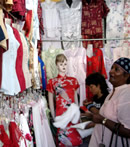
Foreigners are interesting in Suzhou silk.
When one thinks of China, silk is one of the first things that come to mind. China is the birthplace of silk, and still produces some of the finest silk in the world. In all of China the best place to discover the wonder of silk is the city of Suzhou. It was there that some of the first silk embroideries originated, and Suzhou is still producing the best silks in China. It has been said that feeling the draping of silk across the skin is as close to heaven as one can get. There is something wonderful and mysterious about Suzhou's silk.
Authentic Suzhou silk is produced from the cocoons of silkworms. Silkworms are actually not worms, but caterpillars. Silk can be produced from mulberry leaves, cassava leaves, castor-oil plant leaves, or oak leaves, but the finest quality silk is made from silkworms that were fed purely on mulberry leaves. Silkworms feed on mulberry leaves until they are one month old. Then the worms build a cocoon to protect themselves until they change into a moth. Once the cocoons are finished workers will collect the cocoons and place them in hot water. This kills the worms and melts the natural glue that holds the cocoons together. Once the natural glue has been melted each cocoon can yield over 2,000 feet of silk thread. Once the silk thread has been unspun, it is hung outside to dry in the sun and then woven on looms. It is an extremely labor intensive process, but only this will guarantee silk of the finest quality.
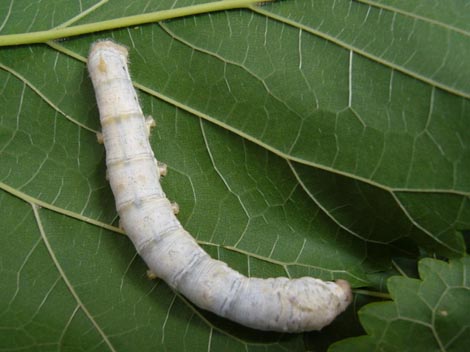
Silkworms
Sadly, like anything that is precious and beautiful there is much fake silk available on the market that is advertised as authentic. Fortunately there are many simple ways to detect fake silk from pure. True silk is smooth to the touch, naturally shiny and bright. It drapes well, feels wonderful on the skin, and absorbs moisture. Fake silk will not have these properties. When examining silk one should first use their eyes. This is a great way to tell true silk from artificial. The warps and wefts of true silk will be woven finely and be flat with bright, even, and neat colors. Fake silk is made of man-made materials. The thread will not be even in thickness, and the warps and wefts will not be very even, or flat. The colors will have flaws, and will have uneven colors. The next and perhaps the most enjoyable way of detecting fake silk is by feeling the silk. True silk will be smooth and soft to the touch and it will lay across the skin in a very natural way. It should feel fantastic. Another way to test silk's authenticity is to test the silk's voice. True silk will emit a sound when rubbing. It is called the silk voice. If silk does not have a voice, it is man-made and not authentic silk. Fire is also a good way to test silk. Take a thread from the cloth, and light it. True silk will burn slowly, and curl. It will smell like burning hair, and will crumble into dust. Fake silk will burn quickly, smell like burning plastic, and will melt into a glob. Just be careful when implementing this test. Burnt fingers will make the whole silk shopping experience less enjoyable.
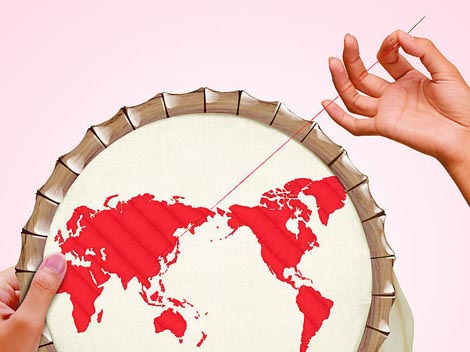
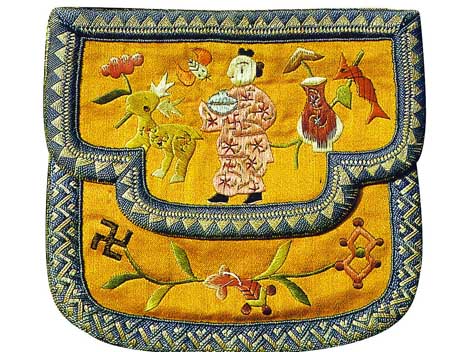
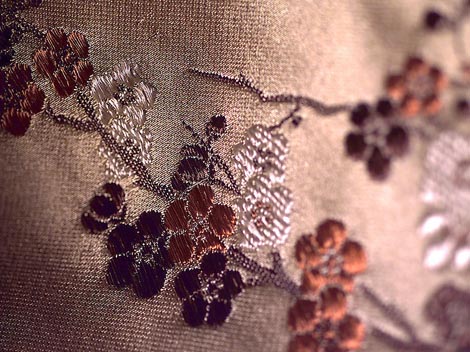
Suzhou Silk can be made into innumerable products. It is most commonly made into clothing or scarves, but Suzhou silk can also be made into shoes, napkin, toys, and even kites. It is an amazing and versatile fabric that deserves its reputation. When purchasing Suzhou silk, it is always best to go to a silk manufacturing plant. This will not only give you a better understanding of how silk is produced, but will give you a chance to ask many questions and get the best prices. Also, you are guaranteed that the Suzhou silk you purchase is authentic silk, and the employees will show you how to authenticate it. It will give you a greater appreciation for the products you purchase.





